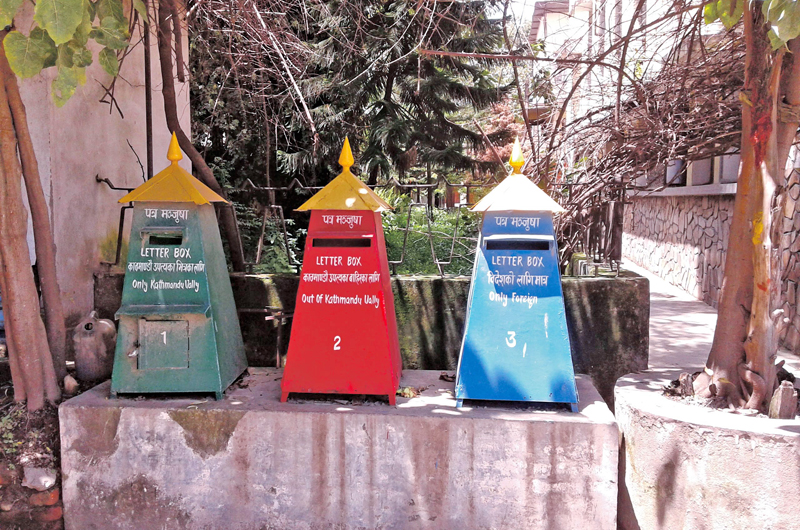National postal system in dire need of restructuring
- Offices, staff size require downsizing
- New businesses have to be created
Kathmandu, April 2
The 138-year-old government postal service, one of the oldest governmental services, is now in dire of restructuring.
New businesses also have to be created if it is to do well in today’s context.
With the practice of sending letters through post offices declining by 80 per cent, Nepal’s postal service has not been able to compete with private sector services such as courier service centres and DHL (international shipping, courier and packaging service provider).
As people now have widespread access to modern communication technologies that have virtually phased out letters sent via post, the country’s postal service has been left with two options – downsizing offices and staff and creating new businesses under the postal service system.
The government spends Rs 3 billion each year on the postal system that runs under Postal Service Department (PSD).
“Of the total budget of around Rs 3 billion of the Ministry of Information and Communications, the PSD budget covers 71 per cent. However, 90 percent of that money comprises PSD salaries and staff allowances,” said Drorna Pokharel, Director General of the department.
Nearly 18,000 staffers, including 6,000 permanent staffers, are work in 4,405 offices under the department across the country although the government has gradually
been downsizing postings, according to department director Badrinath Gaihre.
The 4,405 offices include Postal Service Department; five central offices — General Post Office, Postal Training Centre, Central Money Order Office, Central Ticket Store and Nepal Philatelic Bureau; five regional postal directorates; 70 district post offices; 849 area post offices; 3,074 additional post offices and 401 tele-centres.
Seven categories of services are operated under PSD: Express mail service, post boxes for subscribers, financial services including money order service, postal saving bank and remittance service, parcel delivery, general services of delivering letters and newspapers, 401 IT based tele-centres with email, internet, photocopy, printing, scanning, lamination, phone, fax and computer training and others, including philatelic promotion, same day delivery service in urban area and filling up forms for electronic diversity visa programme.
However, these services are not as effective as they should be in comparison with private sector services such as couriers.
“The number of letters sent through postal service has declined by 80 per cent. Twenty per cent of this number covers official letters and letters from foreigners and individuals. However, parcel service has increased significantly.
“Our postal distributors, halkara, used to reach the doors of people with letters in the past. This is now very rare,” said DG Pokharel.
Although the scenario has changed with the advent of technology, this service cannot be allowed to collapse as it is a major service sector and there is universal obligation to continue this service as Nepal is a member of Universal Postal Union.
“We have no option but to downsize our offices and staff and create new business by using technology as we cannot allow our service to collapse,” Pokharel said.
PSD services have not been able to attract the huge business captured by private sector courier service centres, Pokharel said. “This is because we operate with service motive under many constraints but they are totally motivated by business.”
A committee formed under Narayan Prasad Paudel had submitted a report to the Ministry of Information and Communications suggesting restructuring under the federal model and downsizing offices and staff. “However, the report has not been implemented as the restructuring issue is related to setting up new local and federal structures as per the new constitution and the issue is yet to be resolved at the political level,” Gaihre said.






